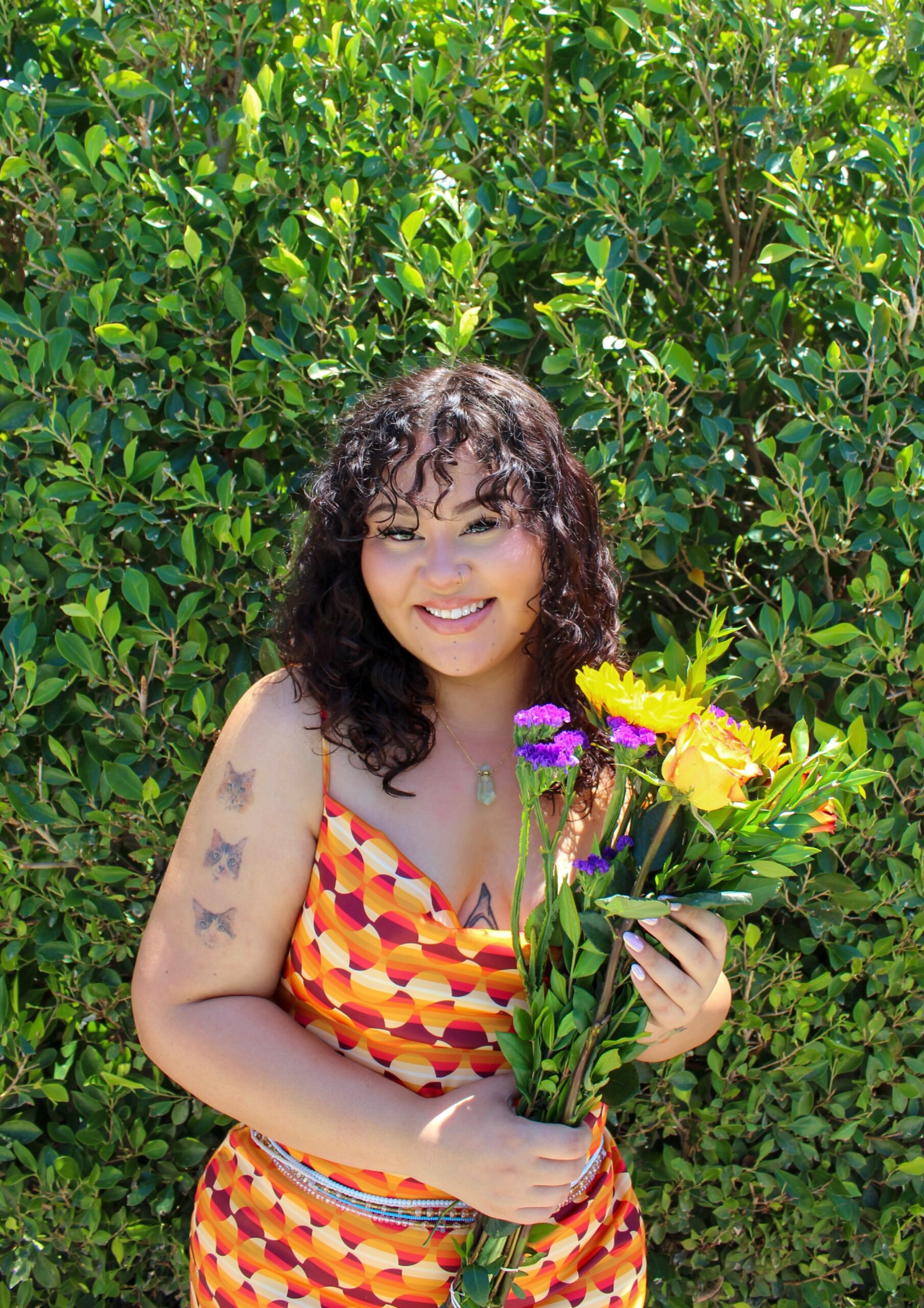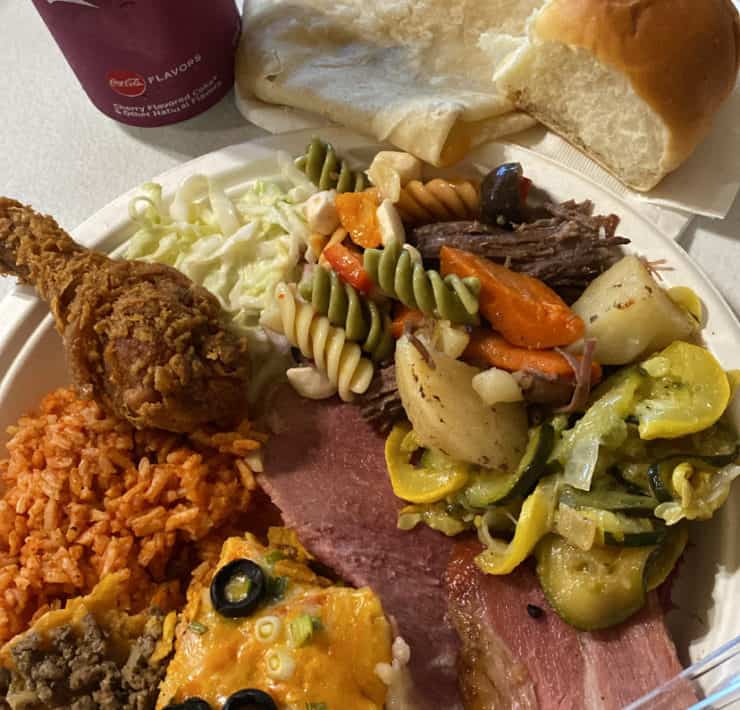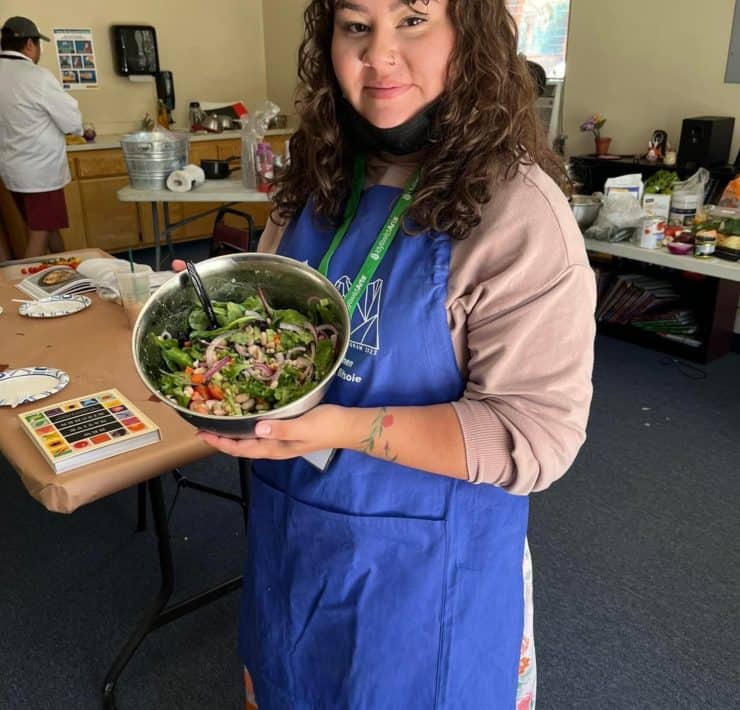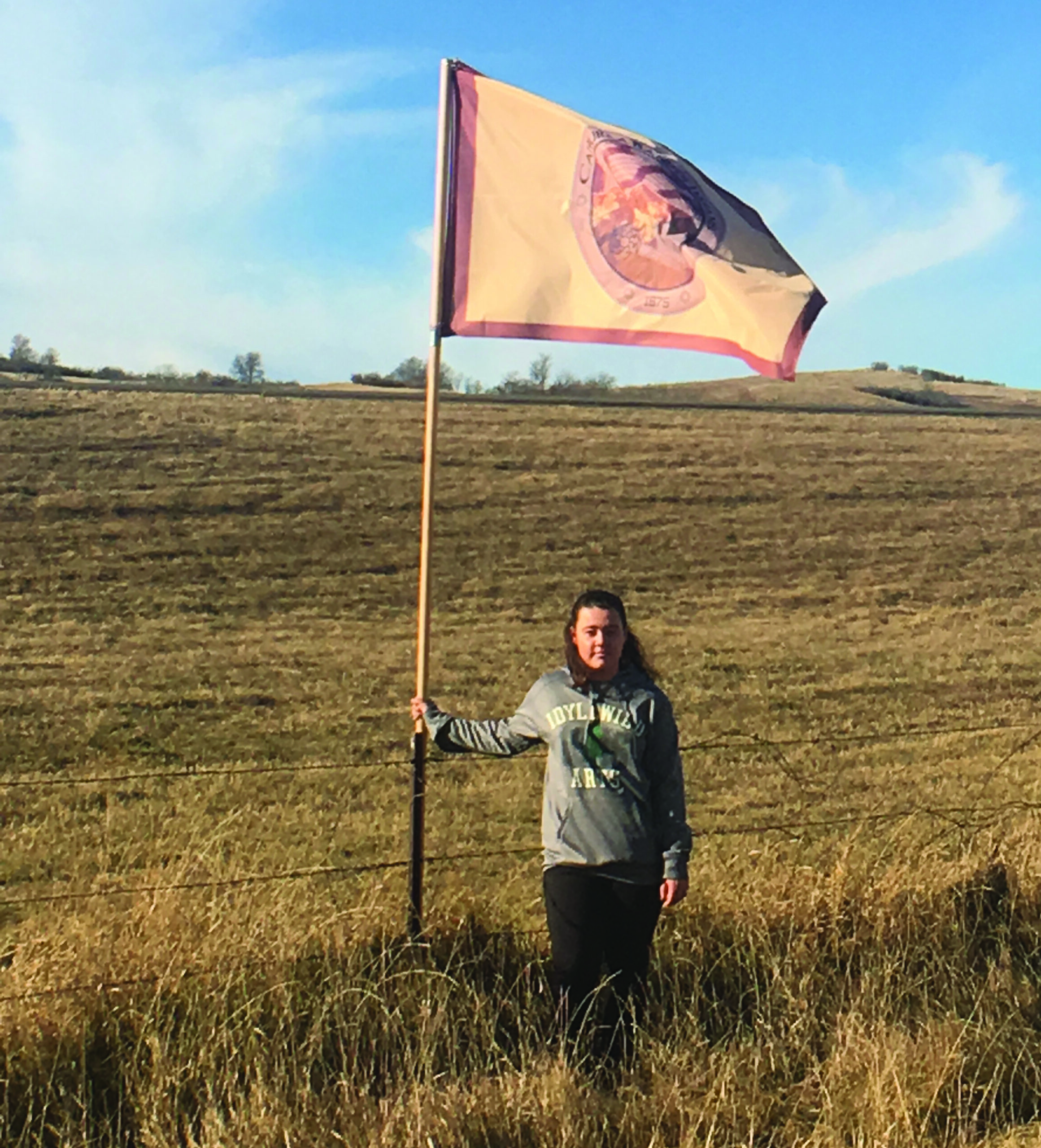
Mni Wiconi
By Emily Clarke (Cahuilla Band of Indians), Creative Writing student at Idyllwild Arts Academy
My dad and I begin our journey from my Grandmother’s house in Onia, Arkansas. I am on Thanksgiving break during my junior year of high school and have been trying to make this trip happen for months. Silence from lack of sleep fills the car on the way to the airport. If we do talk, it consists of simple predictions or hopes for the experience that is to come. Suddenly, my dad yells out and points to the sky through the windshield. A bald eagle is drifting lazily over our car. My dad is in awe, sitting with his mouth hanging open, barely keeping his hands on the wheel. I am suddenly emotional, thinking of the odds that we would spot a bald eagle, only fifteen minutes into our journey to the DAPL Resistance camp. Any doubt that I previously had about the trip vanishes.
The Dakota Access Pipeline, an oil transportation system built by the Energy Transfer Partners, is 1,200 miles long and will disturb the sacred land and burial grounds of the Standing Rock Sioux Indigenous peoples. According to The Bismarck Tribune, the pipeline was first scheduled to go through a nearby North Dakota town by the name of Bismarck, but the locals, in fear of their own safety, land, and water supply, voted that it must be moved. It was moved to go through the Standing Rock Reservation. If pipeline complications occur, the crude oil could potentially harm the Missouri River which is the Standing Rock Tribe’s main source of water. Over 200 tribes, and many people from other areas of the world, have come together to protest the Dakota Access pipeline. Standing Rock Reservation lies nestled in the rolling plains of North Dakota, surrounded by cattle ranches and corn fields. Twenty miles from the Standing Rock tribe’s casino, Prairie Knights, is Oceti Sakowin Camp, the main camp for the Dakota Access Pipeline Resistance.
When I step off the plane and walk into the Bismarck, North Dakota airport, I immediately feel eyes on me. It is a strange sensation, taking one step into a new environment and already feeling like an exile. Bismarck locals waiting for, or sending off loved ones stare at me as my boots clomp through the airport. My dad wears a cap with “Cahuilla,” the name of our tribe, embroidered on it. Briefly, I wonder if I look Native American. Probable ethnicity based off appearance is a generalization I have never put on myself or family members, but in this moment, I can think of no other reason the Bismarck locals are staring at me like I am on trial.
Next to the baggage claim, I see Dallas Goldtooth, a well-known Native American comedian. A man who Goldtooth is traveling with is wearing a “No DAPL” cap and I watch out the corner of my eye as a local angrily confronts him over it.
“You outsiders need to stay outta here!” one Bismarck man shouts.
Soon, at least five other people angrily walk over to the men and there is a shouting match in the airport.
“This is what we’re getting into,” my dad says, watching the DAPL fight as it unfolds.
I don’t tell him that I feel like I’ve been “in it” for years.
We stay in a hotel, because we were unable to bring tents and camping supplies on the plane with us. Although many of the protesters are also spending their nights in Bismarck instead of at the camp, I feel guilty for having a heated room and bed. The next morning, we head to the giant Bismarck Walmart Supercenter to pick up donations for the camp. We already had one suitcase full of medical supplies but we decide to buy more because of the almost constant police brutality.
When we get to the checkout counter, we have a cart full of trauma first aid kits and extra medical supplies. The small elderly woman behind the counter begins ringing us up, item by item.
“You must be expecting a lot of car accidents,” she says.
My dad and I chuckle but say nothing. The woman’s face holds a plastic smile. Her eyes glimmer under the flourescent lighting.
She keeps pressing. “It’s good to always be prepared for those freak accidents. They’re never anything you can expect!”
Again, we both chuckle and nod, but give her no other information. She purses her lips at us and her smile drops.
She leans closer, “You two are some of those protesters, aren’t you?”
We say yes. Finally she gets the information she wants.
“Well, we’ll be nice to you anyway,” she says, and giggles.
The next stop we make is in the parking lot of a State Farm Insurance building, where there is a sign that says “Thank you to all law enforcement!” A car sits in the lot with a bumper sticker reading “Blue Lives Matter.” I open my car door to snap a photo of the sign. As I am taking the photo, I notice that across the streetthere are three law enforcement officers photographing the sign as well.
“Get a pic of them, too!” my dad yells.
“You want me to get shot?” I say, only slightly exaggerating, and slam the door shut.
We leave the parking lot and begin to turn towards the road that will take us to Oceti Sakowin Camp, only to see that it is closed.
“The police are trying to keep people out,” my dad says.
I motion to a gas station next to us and just as we pull in to try and figure out a new route, we see a giant trailer with “Water is Life” painted onto its side.
My dad rolls down his window and shouts to the young man pulling the trailer, “How do we get to the camps?”
“Just follow me, man,” the guy yells back and gives us a thumbs up.
I spend the long drive to Oceti Sakowin Camp thinking about how fortunate it is that we ran into the trailer-man. Both my dad and I agree that we owe our good luck to the eagle who began guiding us at the beginning of our trip. Between the hills that surround the highway is a large, snaking dirt mound. The pipeline follows us all the way to the camp.
We come over the hill that sits just above Oceti Sakowin Camp. Media does not do the camp justice. It is huge. The tops of tipis reach far into the sky along with flags and trails of smoke. There are people bundled in their giant coats everywhere.
We pull into the driveway of the camp amongst 30 or so other cars, and a woman stops us at the gate. She gives us a quick verbal map of camp that includes the mess hall, the medical tent, “Facebook Hill,” (where there is pedal-powered phone chargers and cell service) and the main tipi where all meetings are held. The woman tells my dad to contact her if he needs anything. Her authority is striking.
“And you,” she says speaking directly to me, “come find me if you need anything. Anything at all.”
We drive into camp. Each person we pass is on a mission. They are working, sweating, bleeding, laughing; living. Their tents, tipis, and travel trailers are packed tight into the huge camp space. I smell fire, damp soil, portable toilets. My dad and I walk around camp to try and get our bearings. There is a treaty meeting with elders and lawyers happening in the main tipi. There are boys riding horses through camp, their whoops echoing. There are trauma nurses at the medical tent. There are dirty, bundled children riding bikes through the maze of tents. There are signs reading “This is a drug and alcohol free, spiritual camp.” Other signs, banners, and flags read “Mni Winconi,” meaning “Water is Life,” in the tribe’s traditional language. In the center of the camp, there is a constant large group of people participating in chants, songs, dances, and speeches. The sounds of their voices and instruments flow through speakers and acts as Oceti Sakowin Camp’s playlist. The camp is full of varying languages, voices, ethnicities, backgrounds, ages, and personalities. If America is a “melting pot,” then Oceti Sakowin Camp is the core of it.
We spend the day building tipis from the sky down. Start at the top, use the bottom for balance. Huge, wooden poles are tied together at their tips as they tremble in the sky. Slowly, the huge home is constructed. We work for hours. When the day begins to turn to dark, we’ve almost completed two tipis with an 18 foot diameter. I finish tying the last knot of the inner seams and realize I am shaking. The night brings cold wind and icy ground. My fingers become blistered somewhere in the process. My body is tired, my soul is empowered. I have never built a tipi before. The family who has been managing the process are from New Mexico. They drove in, built the tipis, and leave to drive back home the moment we finish. The elderly woman with the family sewed the huge tipi fabrics (including strategically placed loops, layers, and hooks) herself.
The tipis serve as the school and library for children whose families have left their day-to-day lives behind and moved to Oceti Sakowin Camp for an extended period of time. That is the reality of the DAPL Resistance camp–most inhabitants have left behind almost everything to stand up for what they believe in. Sacrifice is just as constant as opposition.
Later that night, my dad and I set forward to Turtle Island. Turtle Island is the opposite bank of the river just on the outskirts of Oceti Sakowin camp. It is the exact place where anti-DAPL videos proving police-brutality were captured. Turtle Island is also a sacred place and burial ground for the Standing Rock tribe. At first, I see nothing- only darkness- only the dark shine of the river. But then I see the tiny red blinking lights of video cameras. I see the movement of thick, armored bodies. I see the ominous silhouette of weapons. Ten or so officers are occupying Turtle Island. They are not allowing any protesters to cross the river, despite Turtle Island being a sacred place. They are hidden in the shadows, watching, waiting. My breath catches. On our side of the river, there are a small amount of people, campfires, and a few vehicles. Some of our people chant or sing, but most yell things across the river at the officers. They shout things like, “You don’t have to do this” and “We believe in you to make a change.” One woman asks them if they want hot chocolate. Other protesters just stare. The edge of Turtle Island is surrounded with razor wire. There are broken canoes and a few pieces of clothing inside the ring of harsh wire: the evidence of protesters trying to cross the river.
It is a powerful stand off and I am caught in the midst of it. I glance to my right and there, complete with boots and beard, is Vermin Supreme; performance artist, activist, and governmental figure. He smiles at me. But every DAPL protest video I’ve seen, every article I’ve read, every picture I’ve analyzed flashes through my mind and all I can see is the pain. All I can see is the tear gas, the rubber bullets, the explosives. I step away from the river’s edge and cower behind my dad. I am not proud of my fear, but I know it is validated. A protester yells “This is our land” and I cower. I think about yelling something too, but if I were to do it hidden behind my father’s body, I doubt if I could respect myself afterwards.
“This is intense,” My dad says, staring at me wide-eyed.
His body is tense, his hands rest fisted in his hoodie pockets. He puts his hand on my shoulder and guides me slowly to the car.
“Shouldn’t have parked where they could see my plates,” he whispers.
He takes me back to Bismarck.
We try and get food at a knock-off KFC restaurant because it is the only thing open and we have not eaten all day. We walk in and encounter the manager who is shamelessly rude, immediately telling us the restaurant is closed, although their sign reads otherwise. He finally agrees to take our order, still never apologizing, never thanking us for our business. He keeps his eyes on us at all times. I watch him as he wills us to leave. I don’t want to give him our money or time, but my empty stomach disagrees. We don’t sit down. I almost feel like I need to “watch my back.” I wonder if the manager notices our dirty boots, our exhausted posture, or our still-numb-from-the-cold fingers. Now, I realize that we do look Native: my dad’s ponytail, my facial structure, our mostly unnoticeable accents and, of course, our olive brown skin. My body slumps against the back wall of the restaurant. I numbly scroll through social media pages filled with shared DAPL articles. Only now do I realize how emotionally exhausting this day has been.
Our next and last day at Oceti Sakowin camp is a blur. We spend the morning exploring Standing Rock Reservation itself and then make our way to Oceti Sakowin Camp. The woman at the gate says, “Welcome home.”
There is a huge, bobbing march of people migrating through camp. They carry flags that read “Water is Life,” “No DAPL,” and “Women’s Silent Prayer March.” The women walk in rows, arms locked together. As they make their way through camp silently, everyone else falls quiet as well. I immediately join, locking arms with the first woman I see. Other protesters, including my dad, follow us closely with cameras. I make sure to stare directly into every one. Later, my dad tells me I looked “ready to kick some ass.”
I am with a powerful group of women, and we say what needs to be said without speaking at all. We walk through camp and towards the front lines (a bridge directly over the river). In the middle of the bridge are military vehicles, fencing, and 20+ officers in SWAT gear. Before we arrive, the leader of our march stops us, and makes sure all young women are in the back of the march. I realize how close I am to the front and walk to the middle of the crowd to find my dad. We lock arms silently.
“Absolutely no children involved,” the woman says to the crowd, “and if you are at the front, you need to know that there is a possibility things will get violent or that you will be arrested.”
I can see the front lines. I can see the officers and cop cars speeding over the distant hills, on their way to make sure this peaceful, silent march of hundreds of women don’t pass the barricades and come closer to construction. I can see the weapons. The same fear from Turtle Island ignites itself inside me, but I am determined. I walk on. I will do this. I will do this. I will do this. I’m so close when my dad pulls me out of the crowd and to a hillside directly next to the front lines.
“I just don’t know,” he says, looking worried. We watch as the women and now, men, directly below us march onto the bridge. The protesters who are in the front kneel in front of the officers, not saying a word. The rest of the march stands strong, silent, and bold. The officers stare. This goes on for what seems to be an endless amount of time. I watch from the hillside, body shivering in the excruciating cold. Finally, the officers tell the marchers that they need to go back to camp. They’ve given us our time, and now, it needs to go back to the way it is. Marchers cover the trails on the hills as they walk back to camp slowly. Shivering hands are cupped around mouths with warm air and scarves are pulled tighter. We are undefeated, but still not victorious.
That night there is a benefit concert at Prairie Knights Casino. The artists include Jason Mraz, Jackson Browne, Bonnie Raitt, Joel Rafael and the late John Trudell’s band, “Bad Dog.” Some songs are written for DAPL resistance, others are just an outlet, or a moment of enjoyable relief. Between every song, the crowd chants “Water is Life.” I buy a t-shirt. Then, I am out the door and it’s snowing. We barely make it back to Bismarck. I think of the campers, the flimsy tents, the struggle to keep warm. Life at Oceti Sakowin Camp will be rougher as winter worsens, but it will not cease.
As I slowly make my way through security at the airport, I see it is full of campers going home because of the snowstorm. Some have been at camp for as little time as I have, and some have been there for as long as six weeks. I meet the actor James Cromwell, who has been at the camp, helping and protesting. He asks me about the women’s march, and tells me about his own experience at a Turtle Island prayer circle. Suddenly, the big time actor and I are equals. We are both fighting the same fight.
Then I find musicians Vanilla Ice and Coolio in the airport gift shop. I hear them explain to fans that they’re here for a second DAPL Resistance benefit concert in Bismarck and later find out that Bismarck locals booed them off stage after they expressed their support for DAPL protesters.
I board the plane. I already feel ready to go back, but my body slumps against my seat, exhausted. My life will go on as it always has, but life at Oceti Sakowin Camp will change every day. There will always be a new detail, a new loophole, a new reason to fight. Water Protectors will always be standing up for what we believe in, together. Racism doesn’t live at Oceti Sakowin Camp. Hate doesn’t live at Oceti Sakowin Camp. Judgment doesn’t live at Oceti Sakowin Camp. There, standing in the center of camp, are people of all colors, ages, genders, and backgrounds, standing as one. We will always fight for our land, our rights, our water, and our people. The unity, power, and love I felt at Oceti Sakowin camp was the strongest I’ve ever experienced. We’ve already won half the battle with just that.
I rest my head on my dad’s shoulder and watch North Dakota land blur outside the plane window for as long as I can.
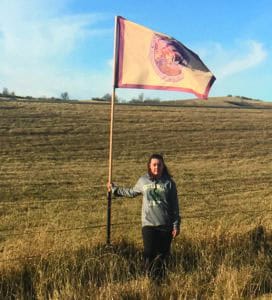

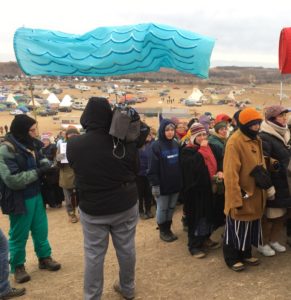
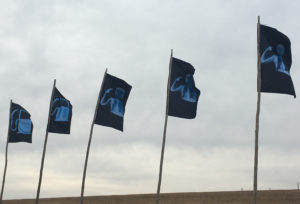

All photos taken by Emily Clarke.




